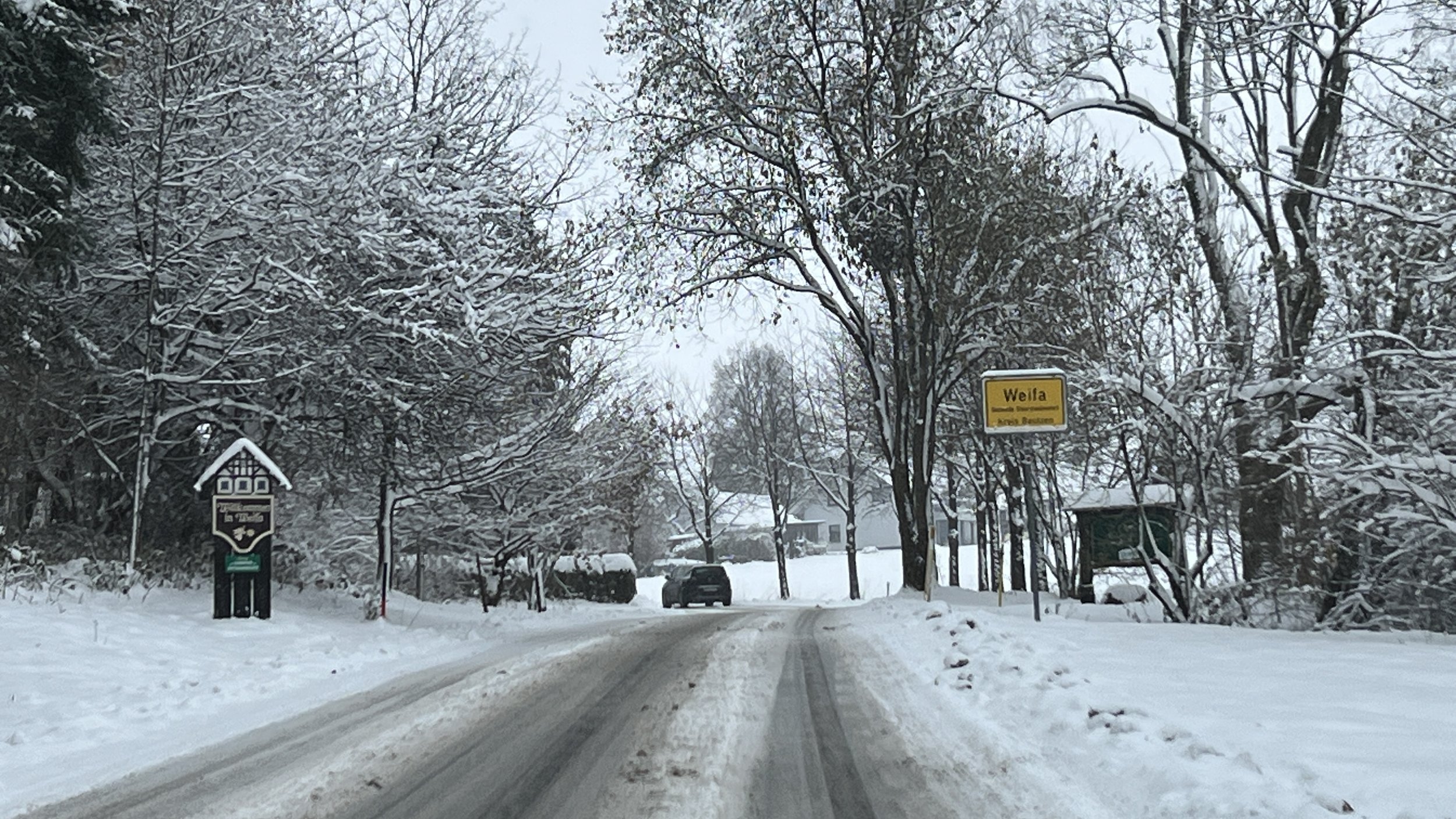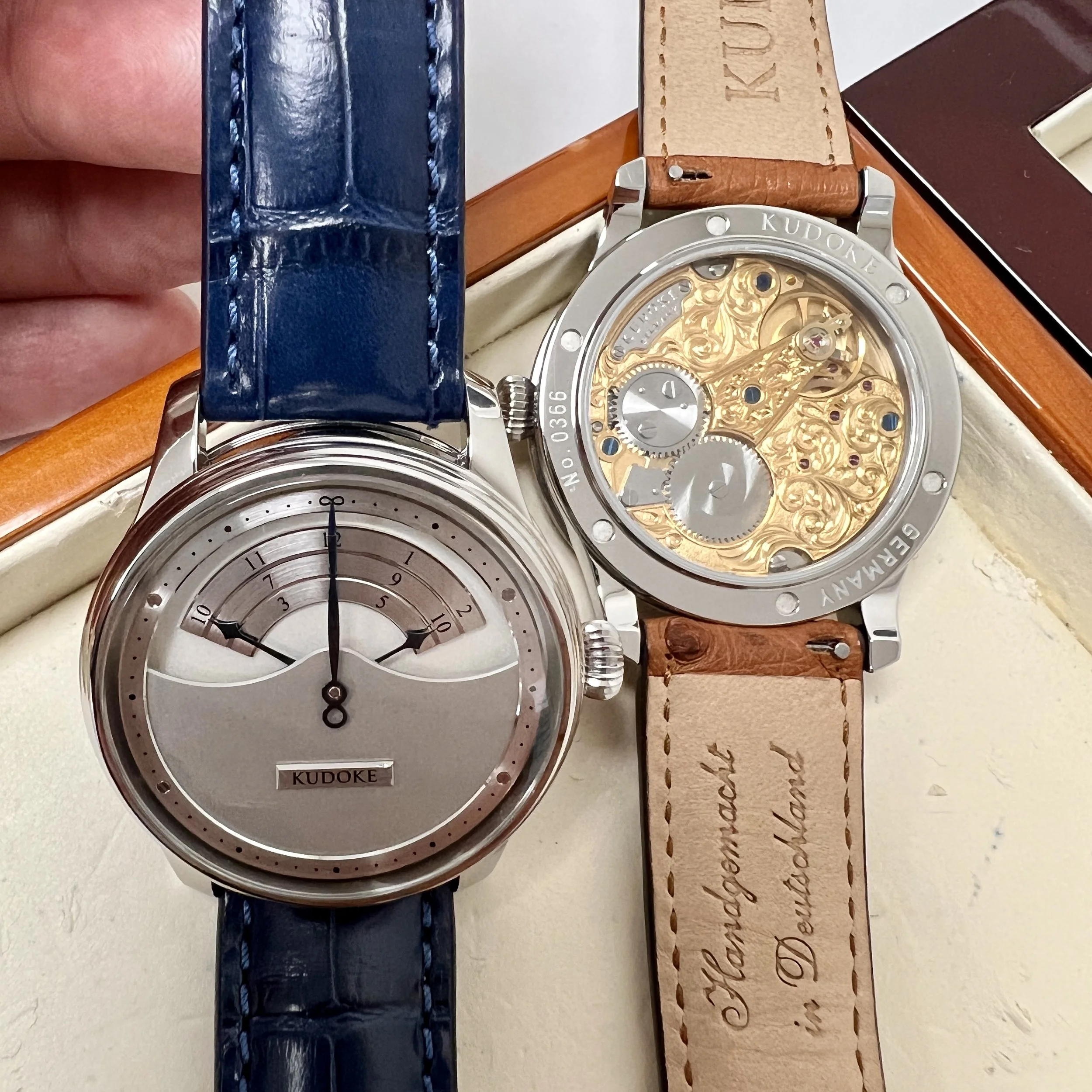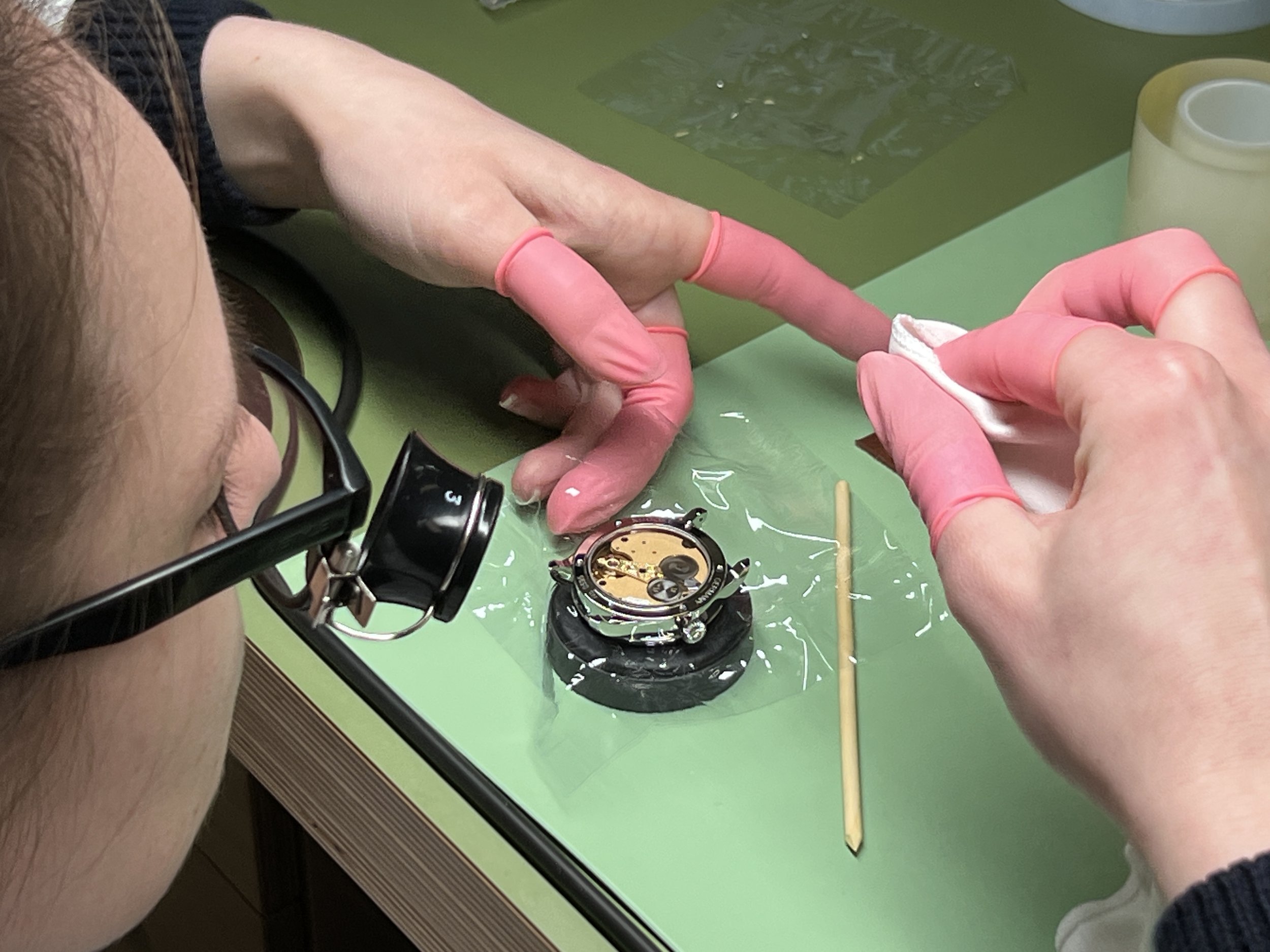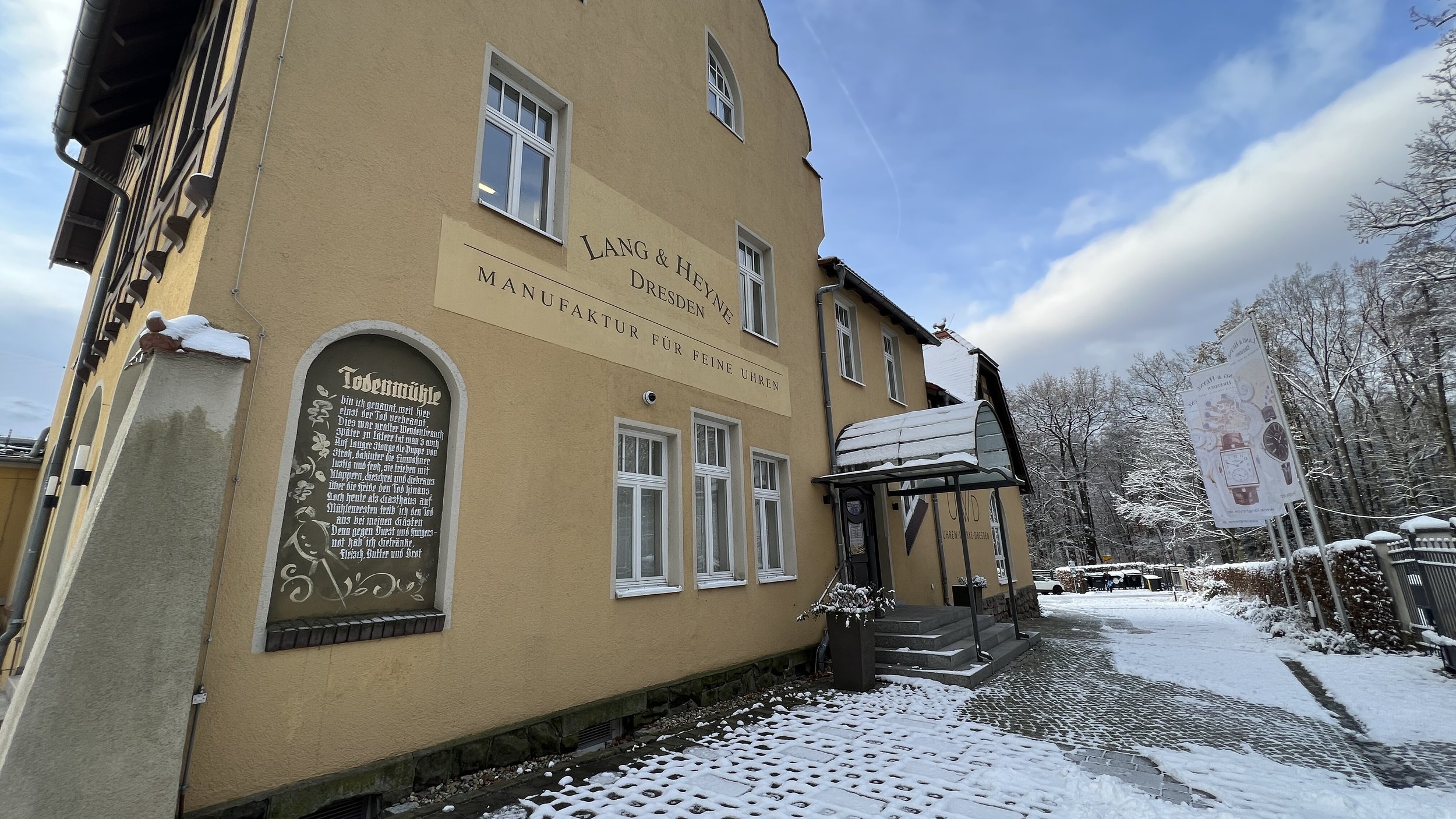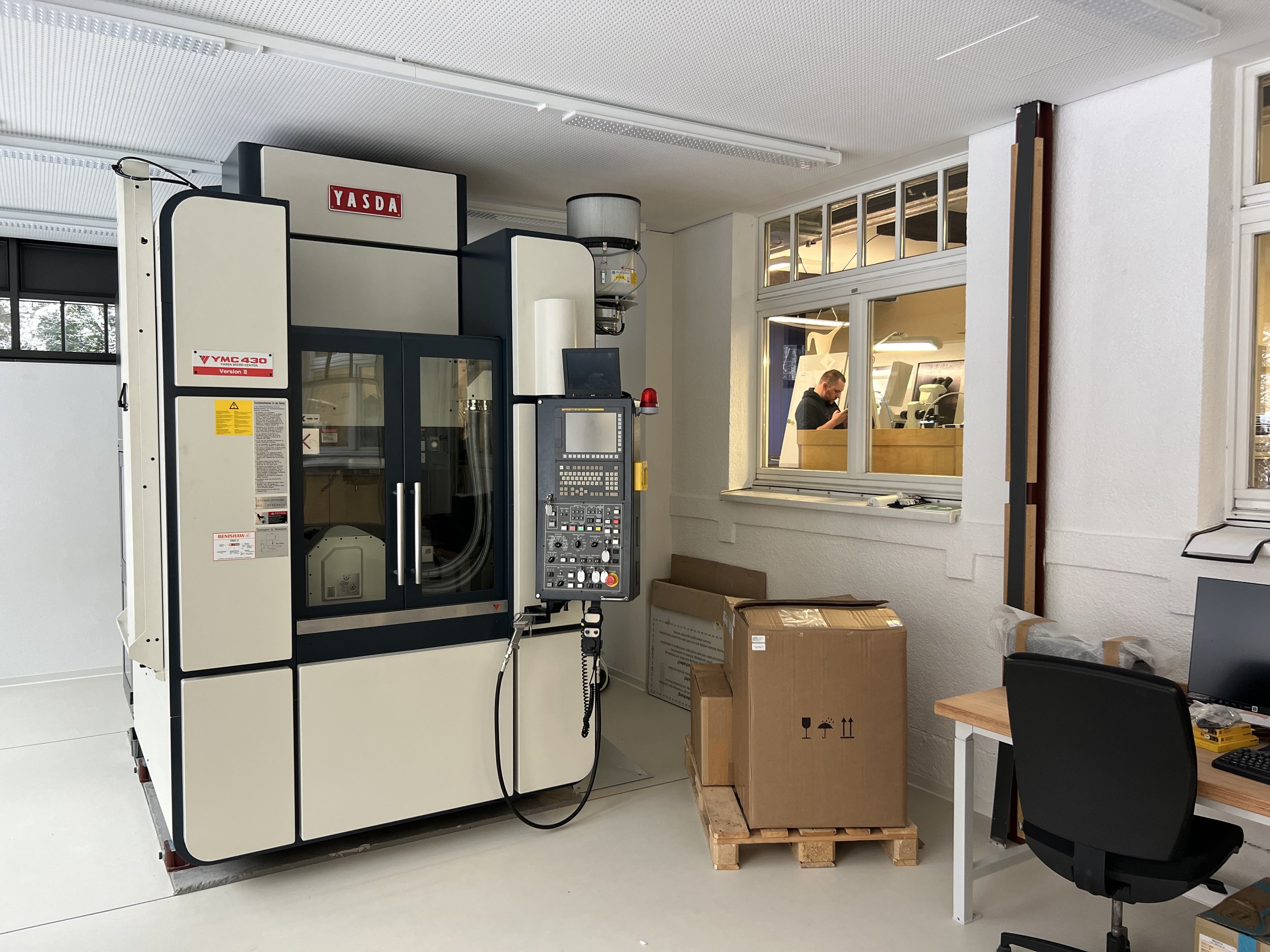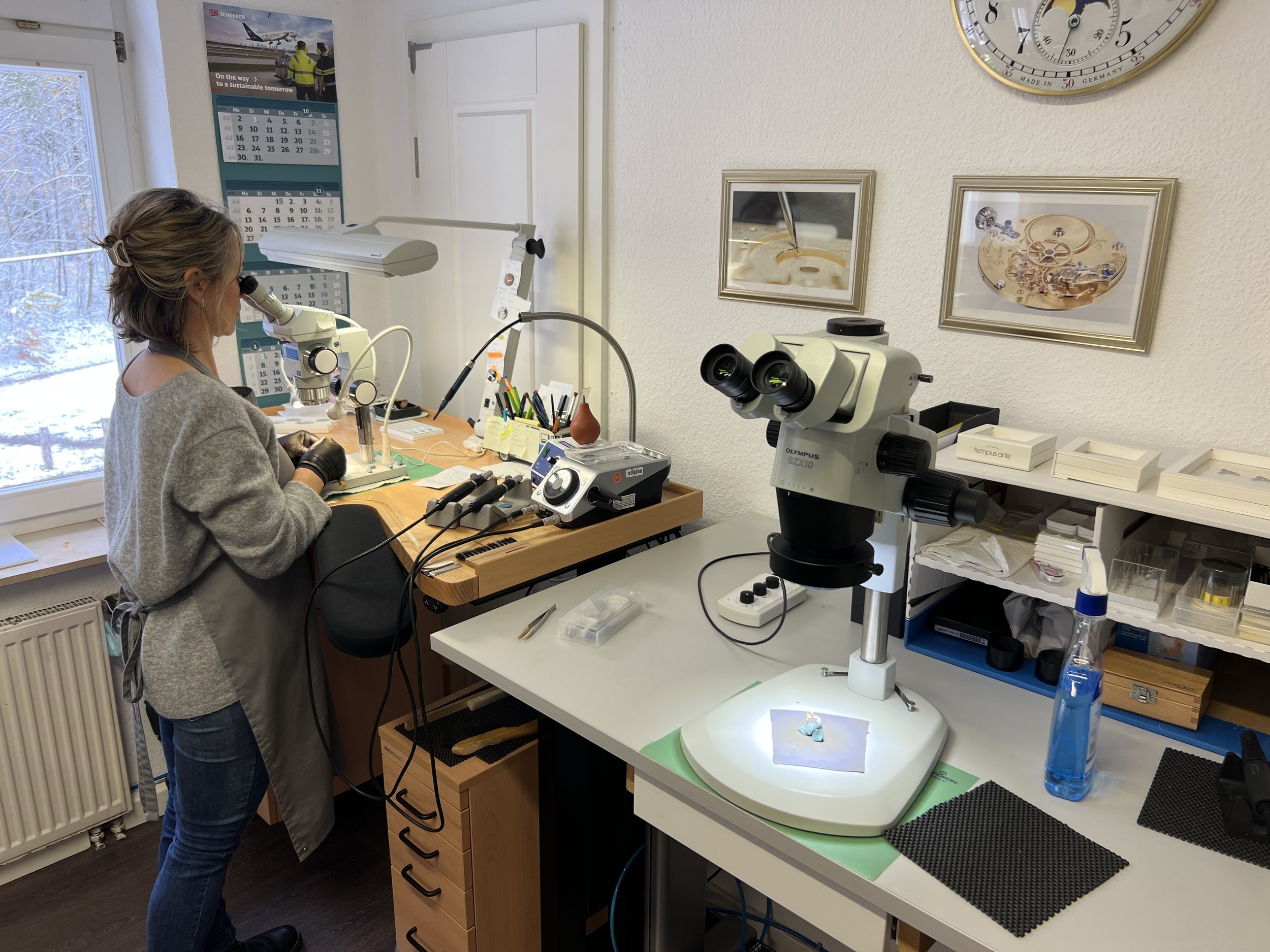I arrived into a snowy Dresden from Geneva via Frankfurt. The Dresden airport is a shiny example of federal infrastructure funds being put to good use, albeit without fully understanding the commercial situation and location. There is not much call for flying into Dresden, when trains are efficient, economical and go direct to major international airports. Rather similar to many commercial watch brands. Too much unsaleable models, created under the concept that if we build it they will buy. The end user is in the driving seat more and more in todays world and the days of and ability to foist off poorly designed and executed watches on unsuspecting and/or ignorant buyers is rapidly coming to a close. The transparency and therefore expected honesty now required by buyers is changing the market place, and it couldn’t come at a better time. The money involved in “Luxury Watches” is big and real. The likes of LVMH, Swatch Group and Richemont, are serious players who expect to continue to make good returns on their investments and be paying dividends to stock holders. They are more and more having their proverbial “feet held to the fire” and this is good for consumers. Honesty and transparency in the business of watchmaking, has shall we say “Not always been of paramount importance” in the marketing and selling of wristwatches. It’s high time that changed, and that is why I chose to work with the artisanal independent watchmakers, beginning in 2003 with Peter Speake. My second watchmaker I chose to work with in 2004 was Marco Lang, formerly of Lang & Heyne in Dresden, hence my recent visit to Dresden. Twenty years on and I am thrilled to still be representing Marco Lang in his business and consider Peter and Marco lifelong friends.
The Palace on a cold and snowy December day, Dresden.
Day 1: Kudoke atelier, Weifa, Germany
My first port of call after decompressing in the lovely baroque Dresden city center near the old palace of the Saxon rulers, was to visit the village of Weifa, where Kudoke watches are made.
Driving into Weifa, a few minutes after was picked up at the closest train station, 30 mins east of Dresden, Germany.
It was quite snowy and cold in Dresden, rather unusual for this time of year, so took the local train out to visit. I was picked up by Ev Kudoke and we made our way through a couple of small villages to Weifa. This turned out to be the village Ev Kudoke grew up in, and the feel of a small local village was strong. The Kudokes had recently been able to purchase a plot of land 200m from their home. Their old atelier used to be located in their home’s ground floor, and being able to realize their dream to create their own purpose built atelier for the growing business nearby, was exciting.
The new Kudoke atelier in the village of Weifa
The completion and move in happened in the last half of 2023, so when I visited, they were comfortable and settled in. They have all they need for the production of their lovely watches, including separate offices for Stefan and Ev. For Stefan, being able to close the door and get creative without the kids or co-workers interrupting, was a new and exciting opportunity. It also allows for a bit more separation of home life and work life, a necessity he has discovered for the balance in life he looks for.
I was shown the main production room, where parts are hand finished, engraving is done, and pieces checked for precision against known dimensions.
De-burring the raw winding bridge, prepping for the hand finishing such as beveling the edges.
Precision Henri Hauser jig borer machine, Stefan has added modern digital controls to aid in knowing how precise he needs to be.
Close up of the digital addition to the old machine.
Two Schaublin watchmaker’s lathes, used mostly for prototyping parts
Graining the surface of a wheel for a KUNSTwerk skeletonised model.
Perlage station on the left.
One aspect that I have found common outside of Switzerland particularly, is the difficulty of finding technically skilled staff to help with hand finishing of watch parts and then fully qualified and able watchmakers to assemble and test watches. Stefan has recently hired two ladies from outside the watchmaking world, who he is training to help him in the finishing area. If memory serves me correctly, they came from the eye wear business previously. When I was there, they were working on the beveling of the winding bridge.
The base caliber that the Kudoke’s use in their Kaliber 1, is from their good friends in Austria, the Habrings. Stefan has changed the upper bridges significantly, the click is his as is the central bridge, that is typically hand engraved in a similar manner to old English pocketwatch calibers.
The winding bridges.
The engraving bench, with microscope and lighting setup.
Yours truly having a crack at hand engraving with the air pressure enabled engraving tool. Much harder than it looks!
I got to try my hand at using an airpressure enabled engraving tool, it was quite tricky and I’m sure takes many many hours to master. The hand engaving on the Kudoke watches is typically done by their hand engraver, not Stefan himself. The original Kudoke 1 resides on my wrist and it evokes much pleasure every time I wear it. Since then, his design ideas have incorporated a lovely Day/Night or 24hr indicator hand engraved disc, that is positioned at 12 o’clock on the brilliant Kudoke 2 model. More recently, he showed the latest Kudoke model, the K3 in Geneva last April to much praise. I loved it upon getting may hands on it during the AHCI show. I was able to snap a few images then, but seeing it and getting to handle it inside the atelier in Weifa was quite different.
The K3
The design incorporates a clever but very simple concept for the hour hand. The hour pinion drives a three handed “Hour hand” that features three different lengths of hand spaced 120 degrees apart, that then “point” to the corresponding hour digit on the three 120 degree Hour Arcs arranged between ten and two on the lower dial. The minute hand does what a standard minute hand does. Depending upon what hour it is, either one or two of the hour hands will be hidden from view. The initial watch is shown in the original silver and sand blasted/grained light grey dial. I’m sure there will be other color options in due course, also be on the lookout for some limited editions utilizing some previously used colors from various retailers.
The Kudoke’s have two qualified watchmakers on the upper floor, doing the assembly and final testing. These watchmakers came from Glashutte previously, where they had worked for A. Lange & Sohne and Glashutte Original respectively.
The two watchmakers in the assembly and final testing area upstairs.
They employ a dual eye system to check each other’s work and to do the required QC on each other’s work too, insuring that the watches are as close to perfect as humanly possible. My experience with Stefan’s watches, is that they do a very good job with their QC, which is a comforting aspect of working with them. Being German, they are highly organized and they have their systems for production down. The delivery times suggested are typically right on, again a refreshing aspect of doing business.
The K3 on the left and a fully hand engraved caliber 1 on the right.
It was comforting to see several watches on test and being prepared to be shipped out to their retailers. The dials that are possible and the color combinations make for lovely looking watches. I happen to find the new gold dial K2 exquisite and have one coming for stock. Should be here mid year.
Last QC before wrapping in clear plastic protector.
Final testing prior to shipping out.
Timing testing.
We then closed up shop with some tea and local cake in their new showroom office that houses the small showcase they use during exhibitions, and it is where the GPHG prize resides. I had to get a picture of Stefan holding it, much to his uncomfortable nature of being in the spotlight. His talent and reputation are I am happy to say, coming to the attention of many buyers. I’m very happy that he has found a good path in the independent watchmaking field amongst his AHCI peers, with which to create his vision of artisanal watchmaking. We chatted about business and the future and I placed stock orders and asked about a special order piece.
A gold dialed K2 I ordered for stock.
I know it’s a bit cruel, but I had to ask Stefan to pose with Ev for this image with the GPHG award for their K2 model awarded in 2019!
The first German independent watchmaker to receive an award in Geneva.
We then headed back to their home, where I was able to view the ground floor where previously the Kudoke atelier had been housed. The new building is a massive upgrade and I can see why they needed to do that. In fact it is difficult to imagine how they operated in such cramped conditions! I’m very happy for them. We then jumped into the car and headed into Dresden to meet up with Marco Lang and his wife for a great Italian dinner. I retired to my hotel, very happy and full of delicious food. The day provided much in the way of appreciation and understanding for the Kudoke team of Stefan & Ev. My K1 model is a lovely watch to wear and it gets a lot of wrist time.
Day Two: Lang & Heyne, Dresden.
Up early and off to Radeberg, 15 mins from the center of Dresden, to visit the Lang & Heyne manufacture. I had been here previously in 2018 during the summer soon after they had moved in and were still setting everything up. The difference with snow on the ground was huge! Tucked away in this old building on the edge of the forest, is where L&H manufactures their superb watches.
The old building that houses the Lang & Heyne business.
On the lower level or ground level of the manufacture building is the manufacturing of all the different parts that go into a Lang & Heyne watch. I got to see the rooms where some of the parts are made from raw steel and brass, the parts then are taken to the other rooms where the finishing is done to these raw parts. There’s a variety of machines that are familiar, lathes and milling machines.
CNC wheel and pinion cutting machine that is fead with 2metre long stock brass or steel rods. It operates 24/7 if needed at the precision levels required.
Another CNC multi axis milling machine.
A tray of raw brass mainplates fresh out of a CNC multi axis milling machine.
This ground floor workshop in the main building, houses a gentleman who is working on finishing techniques with an eye to using more modern technology/machines in order to enable a quicker result. The double snailing on the ratchet wheel is done on an old Schaublin 70 lathe. Very cool to see this in operation. The result is consistent and precise.
Carefully operating the Schaublin 70 to get the double snailing just right!
Double snailed ratchet wheel
Wooden discs for polishing pinions and wheel teeth.
I found fascinating a modern machine from Switzerland, that does straight graining on small parts with the use of a very, very fine grit paper that is fed from one spool when it’s fresh to another spool once it’s been used. The set up looks like an old cinema camera. Why is this interesting, because when you straight grain with the same amount of grit each time, you get the exact same repeated straight grain pattern. If you use a traditional tool with the very very fine grade paper attached, over time the paper degrades and has to be replaced. With this system, the exact same amount of grit is in the paper so one gets almost perfect consistency in the straight grading.
Straight graining machine
You can see some of the main plates that are made for the calibers and the CNC machines that are used for the precision parts that are needed in these watches, high degree of precision and consistency is what CNC gives you .
The new 5 axis machine had arrived recently which was so big that it needed its own building, so an annex building was built onto the manufacturer, in order to accommodate this machine that came from Japan. Because Lang and Heyne is a true manufacture, the ground floor of this building has two rooms with CNC machines and it is processing parts 24/7, an impressive amount of investment has been put into this small manufacture by the owner.
Jens Schneider, the Technical Director was very excited about this new CNC machine and the main plates of these watches will be made here.
The recent building extension from my prior visit in 2018, for the new 5 Axis CNC machine.
The new machine, in the recent extension. Not yet hooked up to power.
I was able to look through a microscope at the tiny 14 karat gold screws that are used as the final adjustment on the in-house balance wheels. These tiny screws were produced in a CNC machine as raw parts and then carefully hand polished.
Th screw is so tiny, it isn’t visible in this image. Through the scope though, it was!
I then walked into the other machining room where long time employees of the company were at work on an old CNC machine which was employed here for specialist parts, prototyping as well as tool making, which is always part of watchmaking. On display were an impressive amount of parts that they made here in this building. From some very fine parts, the main plates down to the buckles and even cases.
The “old” CNC machine
These above images show some of the parts that have been manufactured over the years, fully incorporated in watches from Lang & Heyne you can see parts of the main plates, bridges, buckles, cases, lugs to name a few. Also balance wheels, barrels and springs.
We then walked through a darkened room, where two ladies were working on the microscope‘s at very high magnification to check the dimensions and accuracy of the parts against the known designs. In the old days this was done usually under an optical comparator, but with more modern technology, cameras and computers have made this process a little easier and quicker. No pictures allowed in here!
Moving on from here we found a small office with a lady residing in it, creating what to me is one of the more fascinating aspects of certain watches. She is responsible for enameling on some of the more recent watches. Originally Lang & Heyne used Donzé Cadrans SA in Switzerland to supply all the beautiful enamel dials found in the Johann, the Frederick August 1, the Konrad and the brilliant Albert models. They still do to this day.
Three layer Donzé Cadrans SA enamel dial of the FA1 model.
However, with this new skill set under the roof being provided by this very very talented lady, a variety of colored dials are being used in the Champleve technique that she has mastered. The moon phase disk, and the earth’s tilt disc both found in the Moritz model, are made of solid gold champleved, meaning engraved underneath with enamel as the sky for the Moonphase disc, and on the Earth disk, blue enamel for the sea and green for the land. This type of work is true art and science combined, in order to get the right color and consistency of the final product. The enameler must know how much to crush the enamel into the powder before it goes in the kiln for one good piece of enamel. Carefully and controlled to be acceptable i.e. with no bubbles on the surface Typically 2 to 3 dials are rejected for every “Good” one. An example of her impressive skill was on display in a box that showed hand painted in miniatures
Here at Lang & Heyne you can see the moon phase and the earth declination discs that are used in the Moritz model, as well as some enamel dials that could be used potentially for a Georg model.
Enamel work from their inhouse enameller.
The mighty Moritz with the “Americas” earth’s declination disc at 12 o’clock and the moonphase disc at 6 o’clock.
Heading upstairs to the Watchmaking, finishing and assembly rooms. I was shown by Jens something that he was very excited about, ceramic tiles. The ceramic tile is cut into the thickness required and laser engraved with a numerals, which are then filled in with the lacquer at Lang & Heyne, and the polished edges are beveled by hand using a diamond paste similar to bevels on movements. These ceramic dials have the appearance of enamel, however, they are a little more uniform and Jens said easier to produce in the quality required. They also free up Lang & Heyne from the need to have an outside company in Switzerland produce their enamel dials.
White ceramic dial, laser engraved with numerals which are then lacquer filled in by hand.
This was also where Jens showed me the black enamel that they got from a French supplier who according to Jens has the best black enamel for dials. My understanding from being in this business for now 30+ years is that a black enamel dial is considerably harder to execute than a white one. No one has really been able to explain why this is, but it is appears to be true. Lang and Heyne have come up with, to my understanding, a new way of creating enamel dials. They have employed a gemstone cutter to cut discs from the enamel block that they received from France and then it is polished and cut to the exact dimensions of the dial while the polish is almost perfect in this method. They are extremely fragile parts, so extreme care has to be used when they are mounted onto the metal bases for use in the watches. The consistency of this method of creating a black enamel dial is clear to see. This was not something I previously knew about, and found fascinating to learn about.
Black enamel block from France in my hand. Dial parts polished on the right.
The next room we visited had two ladies working on hand finishing up various parts, and under a microscope, I was able to see how the beveling was done on the escape wheel bridge, and the other lady was working on wheel spokes and beveling those.
Careful hand finishing under a scope.
Black polishing the screw tops.
Bevelled wheel spokes.
Then we went into the main assembly room of the watches. This room houses five watchmakers, headed up by a very competent watchmaker, Alex Klar, who got to visit California many moons ago with his masterpiece watch. He crafted a three time zone watch with a derivative of the caliber one for his Master Watchmaker graduation as an apprentice of Marco.
During this visit, he was working on the latest tourbillon watch, which is a Manufacture Edition of only five pieces. The first one was being assembled and tested by him. The difference between the original Anton that was the first tourbillon at L&H and this new model or new variation of the Anton, is that the flying tourbillon in the Alfred Helwig style is now open on the lower part to give the consumer a better view. It reveals a more three-dimensional access to observe the cage rotate. It is held in place with a high polished steel cock rather than the bridge found in the original. The dial is a combination of enamel and ceramic.
The watch assembly room, Alex seated at his bench.
Manufacture Edition Anton Tourbillon caliber #1/5
The dial side
Ceramic and enamel dial parts of the dial.
Official image of the new model from L&H, completed soon after I visited last year.
Official image of Anton caliber.
Another bench housed a Georg caliber eight being assembled, and next door was the Frederick III being assembled.
Freidrich III Caliber VI in assembly.
The Cal VIII ready to go for the Georg.
I was then taken upstairs to where the final testing and checking of the watches occurs prior to them leaving the Lang & Heyne manufacturer to their final destinations. We entered the office of Jens where he works on updating the current pieces and is developing the next caliber. It’s also where final QC occurs. His eyes are the final arbiter to give the thumbs up or thumbs down. A specific checklist is used, as each watch is assembled by one watchmaker in the workshop, so if it needs to be corrected it’s easy to know who to go to!
An enamel dial Georg.
A silver two tone dial Georg
On test were several Georg models as you can see here, and also shown the enamel that they received from a French supplier and this is used by Lang & Heyne in-house for dial assembly. The blocks of enamel are cut with the help of a lapidary (gemstone cutter) for these dials.
We then headed downstairs for tea and the local cake to discuss future business. Another informative visit to a top independent watch manufacture. I learned a lot about the new dial options this trip and also the potential direction of the watchmaking at L&H. The Baton has been passed on from Marco’s time, and the future will reveal how the manufacture will continue in the production of artisanally high end mechanical wristwatches of superior quality. One really only gets to understand and see what is really going on during an in-person visit. This is why I spend the time to do this.
To be continued in Part Two…

